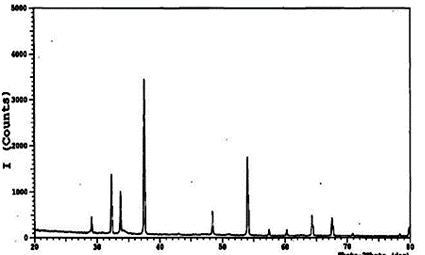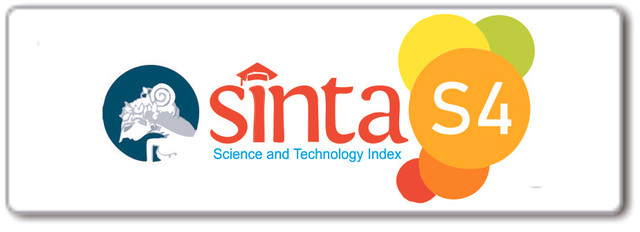Biodiesel from the waste cooking oil is catalyzed by egg-shell of purebred chicken with methanol as a solvent
Abstract
The synthesis of biodiesel from the waste cooking oil was carried out using the catalyst from egg shell of purebred chicken with methanol as a solvent. Synthesis the biodiesel was prepared in two steps, there are esterification and transesterification. In esterification was conducted in mol ratio of methanol and waste cooking oil were 9:1, with H2SO4 as a catalyst. Transesterification with mol ratio methanol and waste cooking oil were 12:1, with CaO from egg shell of purebred chicken as a catalyst. CaO catalyst was yielded by calcinations egg shell of purebred chicken on 1000 ⁰C for two hours. Calcination product was characterized with X-RD to determine of CaO. Result of biodiesel was characterized based on 1H-NMR, FTIR, GC-MS, dan ASTM (American Standard Testing of Materials). Yielded of biodiesel theoretically was 40.298% and experiment was 36.779%. Main component that resulted there is methyl stearic (40.21%).
Downloads

Copyright (c) 2023 Journal Manager

This work is licensed under a Creative Commons Attribution-NonCommercial-ShareAlike 4.0 International License.
Authors who publish with BIOEDUPAT: Pattimura Journal of Biology and Learning agree to the following terms:
- Authors retain copyright and grant the journal right of first publication with the work simultaneously licensed under a Creative Commons Attribution License (CC BY-NC-SA 4.0) that allows others to share the work with an acknowledgment of the work's authorship and initial publication in this journal.
- Authors are able to enter into separate, additional contractual arrangements for the non-exclusive distribution of the journal's published version of the work (e.g., post it to an institutional repository or publish it in a book), with an acknowledgment of its initial publication in this journal.
- Authors are permitted and encouraged to post their work online (e.g., in institutional repositories or on their website) prior to and during the submission process, as it can lead to productive exchanges, as well as earlier and greater citation of published work.








 This work is licensed under a
This work is licensed under a 